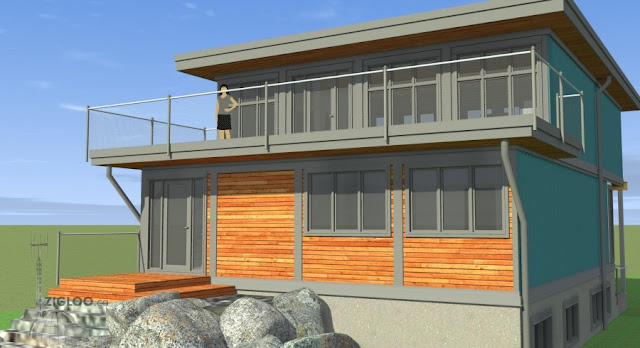The thought of using shipping containers as housing in disaster torn areas certainly isn�t new, but up until now it was only a concept. Now, a group of researchers from Clemson University, called SEED, could make the idea into a reality. The team had been working since Hurricane Katrina to develop a plan to roll out shipping containers and transform them into housing specifically for the Caribbean region in the event of a hurricane when they received word about the disaster in Haiti. Now the group is working double time to try and get their plan launched to help the victims of the earthquake.
SEED�s plan for emergency housing involves utilizing shipping containers, which are strong enough to withstand both hurricanes and seismic activity. Upon arrival, strategic holes would be cut into the sides for light and air. The exteriors would receive a coating of insulating ceramic paint and other modifications to make the boxes liveable, like using wooden shipping pallets that act as �pods� for bathing and cooking. Each container would also receive a starter garden consisting of a 55 gallon drum filled with dirt and planted for �emergency food restoration.� Reused tires would be included to create instant raised beds. Without plumbing and electricity, SEED�s plan is really just to provide safe and non-toxic emergency housing for the short-term, but the containers could likely be modified to be more long term.
The plan is certainly doable, but carrying out the mission is the real challenge now. Martha Skinner, assistant professor and team member of SEED, says �This situation [in Haiti] which is so sad is forcing all of us to be quicker to implement something of great need while people are ready to help. Logistically, getting containers to Haiti is one of the biggest hurdles now, with the port being a complete wreck. SEED is currently working with shipping container companies to donate used containers and governments who are sending supplies in containers as well as others who may be able to supply the equipment needed for modification. We will probably put a team together but we need help,� says Skinner. �It is a huge, but could also be a simple task, if all entities get coordinated.�




